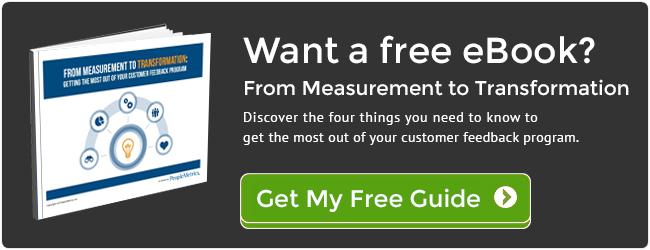If you’re thinking about using VOC and VOE to supercharge your performance reviews, these Do’s and Don’ts should help.
Do – Source both VOC and VOE programs.
Don’t – Over-emphasize one metric without specific direction to do so.
VOC content is especially useful for customer-facing employees, as your employee has a major impact on your customer’s experience with your company. Meanwhile, VOE content is particularly useful for evaluating your team leaders. When reviewing feedback from their direct reports, pay special attention to questions about leadership and direction, as the manager is often the mouthpiece for leadership above. Remember in both cases to consider all questions, not just your favorites. If your partner has performed regression or correlation analysis and shared the most important questions, you can favor those, but if you don’t have that information, we advise against trusting your gut. Your goal should be to consider as much information as possible for more effective reviews.
Do – Use individual metrics.
Don’t – Use overall metrics that include elements outside of the individual’s control.
Your overall metric is specifically designed to capture your impact as a manager (VOE) or customer-facing employee (VOC), but it’s also designed to capture everything else. For VOE, this includes salary, growth opportunities, reputation of the company, work/life balance, and more. For VOC, this includes price, every touchpoint including other staff and your website, variety, quality, your competitors, and more. Think of the marketing mix and imagine the 4 or 5 Ps as a pie – a pie in which the evaluatee is only one piece of a piece. You can get a greater sense of that proportion when you read open-ended feedback, which is also an interesting topic…
Do – Use quotes with identifying info removed as appropriate.
Don’t – Use overly emotional comments, or get overly emotional while reading them yourself.
If you have open-ended questions in your VOE and VOC surveys, reviewing and quoting them to reinforce a point can be very powerful. It connects the employees to the people they are interacting with, and it adds a human element. However, you probably collected the feedback online, and the internet is not a place where people are on their best behavior. Some individuals, given the chance in a survey to vent frustrations, say things in dramatic or disparaging ways. Avoid general or effusive praise or insults, and focus on stories where the respondent describes his/her life being affected by the employee’s work. This involves some prudence, and if you have trouble making such judgment calls…
Do – Reach out to your VOC/VOE partners and internal experts in advance, and ask questions.
Don’t – Feel you need to handle interpretation alone!
Despite never technically having been elected, I will now speak for all VOE and VOC partners: we love it when you look at the data we’re helping you gather, and we’re happy to answer questions. Your questions about how to use the data in your day-to-day work is extremely engaging to us, so we want to help as much as we can. You may also have a local expert who works with this data often, and is ready to help you. The reports and online tools you’re using to view this data will most likely have contact information you need. If you’ve shared questions in advance, you’ll now have a partner in bringing the various resources to help you host a great performance review.
Image Credit: "Darth Grader" by JD Hancock, licensed by CC BY 2.0





